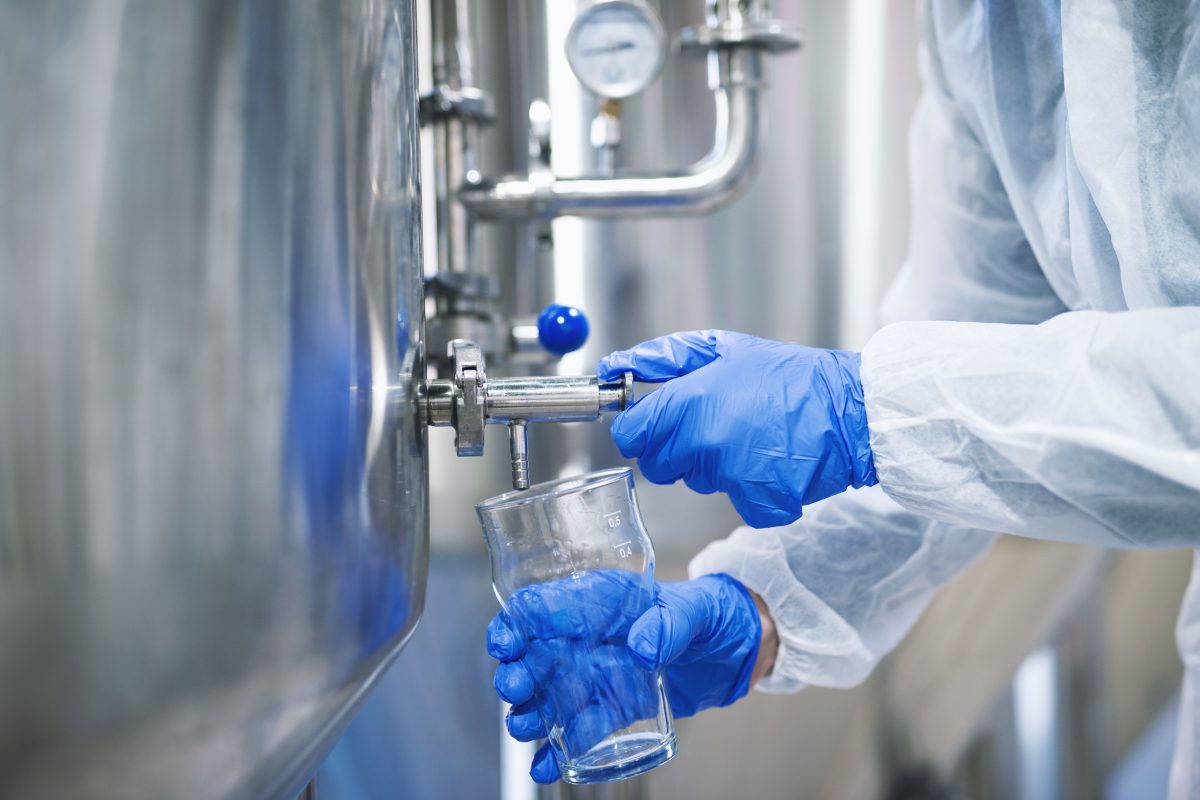
How to Choose the Right Membrane for Water Treatment Plant
Selecting the right membrane for your water treatment plant is one of the most important steps in designing your water treatment facility. Learn about some factors that influence your choice or seek advice from water treatment experts.
When your plant needs separation, clarification, or stream division, and when reliable and repeatable performance is required, membrane filtration systems increasingly become their preferred choice.
At its basic level, membrane filtration involves separating one stream into two streams, one of which is more concentrated than the other, using pressure to selectively pass materials through a semi-permeable physical barrier (the membrane). The separated streams can be further processed, or in the case of waste streams, converted into suitable discharge.
With the ability to separate particles from dissolved species and separate dissolved species themselves, a membrane system can be used to produce a more concentrated or purified final product. With the right membrane selection, the filtration process can isolate dissolved species of specific sizes while allowing other dissolved components to pass through the membrane.
One of the key factors influencing the selection of the appropriate membrane includes:
- The nature of the process is fluid, requiring knowledge of the dissolved material content.
- The molecular weight of the dissolved species.
- Nature and loading of any suspended solids.
- pH level.
- Inlet process stream temperature.
All these factors contribute to the right membrane selection and engineering, aiding in the final decision-making process.
Water purification from impurities for all molecular weights of pollutants
The spectrum of membrane filtration ranges from the smallest molecular level with reverse osmosis (RO), which provides the finest degree of separation. Passing through the membrane, more dissolved species are removed as you progress in the filtration spectrum from drying or purifying water using very tight reverse osmosis filtration, through nanofiltration, ultrafiltration, and finally microfiltration, which essentially separates sub-particle-sized particles from dissolved materials. Between these, these processes can separate particles varying in size from several angstroms to several microns. Different membrane filtration levels require internal pressures ranging from 1000 pounds per square inch (70 bars) in high-pressure systems, to less than 15 pounds per square inch (1 bar) in low-pressure microfiltration units.
Choosing the Right Membrane
Reverse osmosis uses a tight membrane that retains nearly all dissolved species, including sugars and salts. Pressures in this system must exceed the natural osmotic pressure of the dissolved water or any other solvent across the semi-permeable membrane. Reverse osmosis systems are particularly useful in concentrating low-concentration fruit juices, tea, coffee, sugar solutions, and the technology is often used to concentrate industrial wastewater streams like landfill leachates.
Nanofiltration, the next level of filtration, bridges the gap between reverse osmosis and ultrafiltration. It’s used in many industrial applications, where its versatile nature makes it suitable for separating diverse flows such as wastewater streams from dyeing plants and pulp and paper mills, concentrating protein in the dairy industry to juice impurities. It can also be used as a pretreatment to prevent molecular clogging of resin columns.
The upper end of the particle size spectrum requires microfiltration. Here, ceramic and polymeric membranes are often used to provide a wide range of pore sizes for treating liquids in food, beverage, pharmaceutical, and chemical industries, as well as separating industrial wastewater.
Membrane filtration technology has evolved in how membranes are packed and the type of materials used in the membranes. The result is a wide range of unit configurations and membrane architectures, which suit a variety of applications. Membranes are typically supplied in arrangements of tubular, spiral-wound, flat sheet, or hollow fiber, with newer configurations stimulating vibration or using rotating blades to increase filtration rates by reducing the concentration of the condensed surface membrane.
Membrane Configurations

Membrane configurations typically include
(from left to right): spiral-wound membranes, polymer tubes, ceramic tubes, and hollow fibers.
Polymer Tubes
For example, they offer several advantages. They can handle viscous liquids with high levels of suspended matter and can be chemically or mechanically cleaned. Polymer tube membranes are usually found in units made of stainless steel or plastic.
Spiral-Wound Membranes
As the name suggests, they consist of tightly packed filtration materials sandwiched between mesh spacers and wound into a small-diameter tube. This high packing density means a significantly larger surface area in a given filtration unit compared to what can be provided by tubular membranes. If there are suspended particles in the process stream, spiral-wound membranes require careful pre-filtration to avoid clogging. Advances in mesh spacer sizes and designs help increase the number of applications suited for spiral-wound membranes.
Hollow Fiber Membranes
They also consist of tightly packed materials and comprise compressed fibers with a small hollow portion. Filtration can occur from inside to outside or in the reverse direction from outside to inside, allowing for a backflush cycle. While hollow fiber membranes withstand more small particles than spiral-wounds, they often require pre-filtration wherever larger particles or fibers exist in the feedstock. Most polymeric hollow fiber membranes cannot be used under pressures exceeding 30 pounds per square inch (2 bars) without breaking.
Membranes are usually made of polymer or ceramic. Spiral-wound polymer membranes are generally used when high output is required, whereas polymer tubular membranes, often cleanable mechanically, are more suitable for low-maintenance operations, highly viscous products, or liquids containing significant suspended matter.
Hostile environments, high solvent levels, wide pH ranges, and other process considerations may necessitate the use of ceramic membranes. This technology, usually relying on ultrafiltration and microfiltration, involves coatings of alumina or zirconia applied to the inner surface of a ceramic support. The cost of vertical ceramic membranes is much higher than traditional polymer membranes. But in some applications, it’s the only feasible suggestion. Despite the high initial cost, ceramic membranes often compensate by offering a longer operational lifespan. However, ceramics are prone to corrosion even though polymers may be.
Seeking Specialist Assistance
Choosing the right membrane for each application is crucial, and experienced water treatment companies (such as membrane specialists, for example) can help engineers make the right decision. For many applications, these companies can provide membrane filtration units as standard design, requiring minimal testing. In other cases, design engineers may need to extensively test the process on-site. In these instances, experts like those at membrane specialists can be particularly helpful as they have gained experience providing filtration solutions across a wide range of industries and work with potential clients to design and improve a membrane filtration solution.
Before the expert determines the appropriate membrane system for the application. It’s important to conduct some initial financial evaluations to see if installing such a filtration station can be a feasible proposal. Based on this, some design criteria, such as:
- Plant capacity
- Operational costs
- Nature and composition of the product
Usually, membrane specialists help in identifying design criteria by conducting a short pilot test on-site or in the laboratory using a sample from the process stream, to narrow down membrane selection.
Selecting the Right Membrane
Test stations like these allow engineers to assess different membranes realistically for membrane leakage, penetration rate, pressure drop, retention levels, cleaning system effectiveness, and final product quality.
Then, a test system or test station is set up at the factory site. This system will test the effectiveness of the selected membrane system on a larger scale. Using up to 15 square meters of total membrane area. In preliminary trials, it’s important to gather as much useful data as possible as the final design will be built on this information.
It’s also important to address the following questions:
- Will the system be used on a batch or continuous basis?
- How long can the plant be shut down for cleaning?
- What are the main criteria for evaluating success?
These preliminary trials usually last for 2-3 weeks. However it may take longer if process fluids change in composition or volume over time.


























